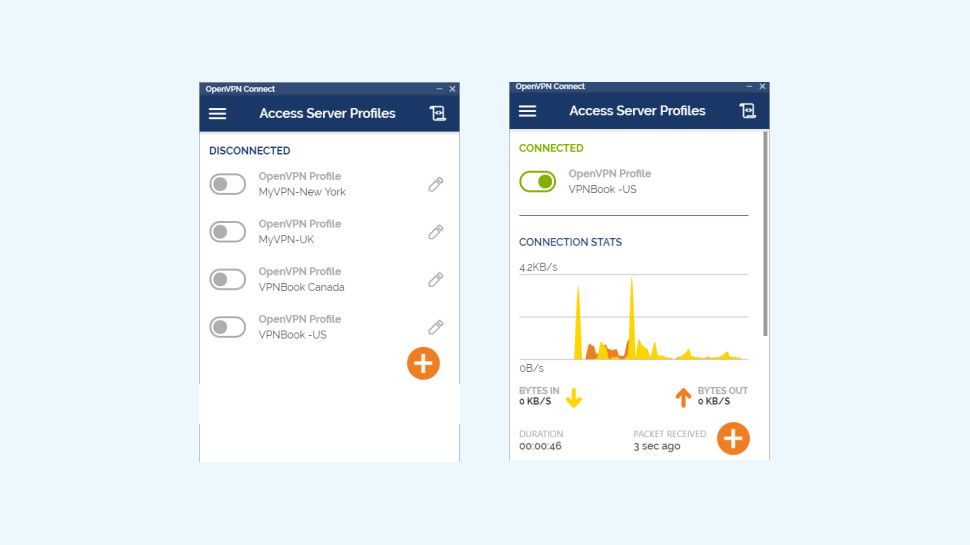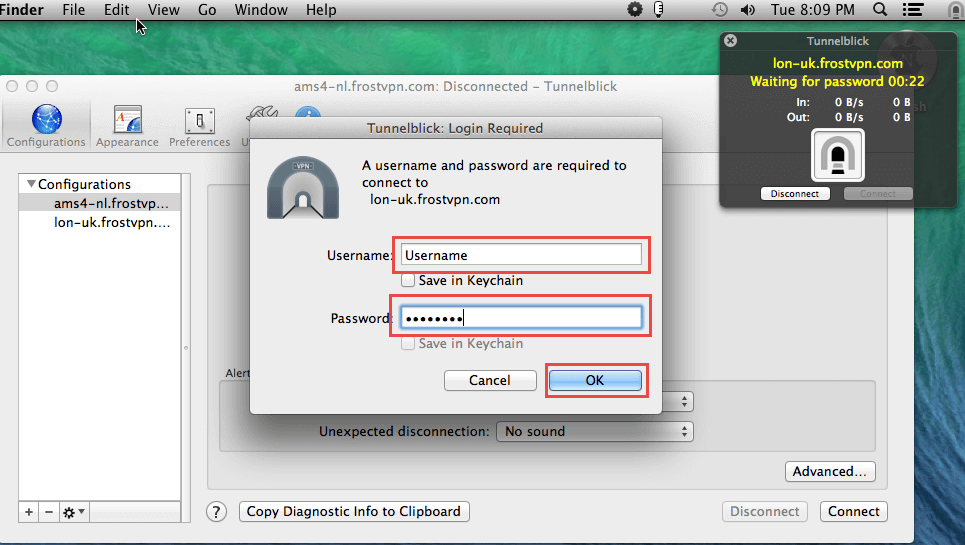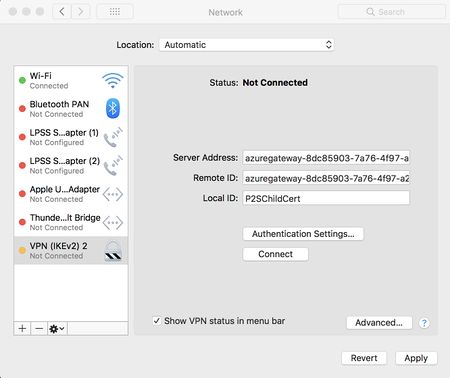

- #OPENVPN CONNECT MAC OS INSTALL#
- #OPENVPN CONNECT MAC OS SOFTWARE#
- #OPENVPN CONNECT MAC OS CODE#
- #OPENVPN CONNECT MAC OS TRIAL#
#OPENVPN CONNECT MAC OS INSTALL#
This authentication is local on your OS X box and is required to install “unofficial” applications. You will probably be asked for your username and password at this point to allow the application access to install. Click the Open button to continue the installation.

You will probably get a warning asking if you really want to open this application. Now go ahead and double click “Tunnelblick” icon to start the installation. Note: Depending on your browser settings, the. This will open up the disk image and you will see the following. dmg will also show up in your Dock if you find it easier to open it from there.

dmg, go to where it is saved and double click the file. You should verify the checksums and hashes of all Tunnelblick downloads by following the instructions above.
#OPENVPN CONNECT MAC OS SOFTWARE#
Tunnelblick protects against unwanted software insertions by publishing the SHA1 checksum and MD5 hash for each of our downloads.
#OPENVPN CONNECT MAC OS CODE#
Tunnelblick binaries were hosted on SourceForge from the fall of 2013, when Google Code stopped hosting new binaries, until, when they were moved from SourceForge to GitHub. In June 2015 there was much discussion (and outrage) about SourceForge providing downloads that contain unwanted or malicious software SourceForge has changed their policies to help avoid this. This is what Tunnelblick states about verifying checksums on their site Compare the checksums to the ones on Tunnelblick’s site. This step is not required but can give you a little extra peace of mind. Open up a terminal /Applications/Utilities/Terminal and find your file and then type the command “openssl sha1 filename” and/or “openssl md5 filename“. The SHA1 and MD5 checksums are listed on the Tunnelblick site under their “downloads” page. OS X comes with a version of OpenSSL built-in and you can use it to generate a SHA1 and/or MD5 checksum of the file. This ensures that the file was downloaded properly and that you have a real Tunnelblick client and are not the victim of a man-in-the-middle attack. It is a good idea to verify your download. Note: This tutorial was written whilst installing Tunnelblick version 3.5.3 released on July 7, 2015. Go ahead and click the “Download Latest Stable Release” green arrow. You are most likely going to want the latest release. Unless of course you want to compile your own, but you are on your own for that. So, the first thing you need to do is get the. For the rest of us Tunnelblick provides an Apple disk image that installs as simply as a double-click. The technical user is free to download the source code and compile their own client if they are so inclined. The repository includes the OpenVPN source code as well as a few other open source projects it makes use of such as the popular OpenSSL project. Technically, Tunnelblick is a Graphical User Interface (GUI) that interfaces with the OpenVPN code. I went ahead and downloaded the latest source repository to take a look. Tunnelblick is released under the GNU General Public License (GPL) and as such all the source code is available. But there are many reasons beyond cost, why a user may want to use an open source client.Ī popular open source OpenVPN client for OS X is Tunnelblick.
#OPENVPN CONNECT MAC OS TRIAL#
It is reasonably priced at $9 and there is a 30 day trial for Windows and OS X. A popular proprietary cross platform OpenVPN client is Viscosity. Most VPN services offer their own OS X binaries that will usually support OpenVPN. While OpenVPN runs on OS X there are no official packages for it. OpenVPN is a popular open source VPN protocol and it is cross platform.


 0 kommentar(er)
0 kommentar(er)
